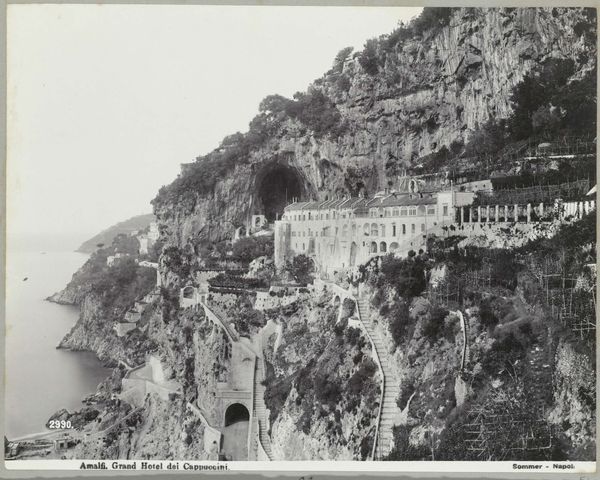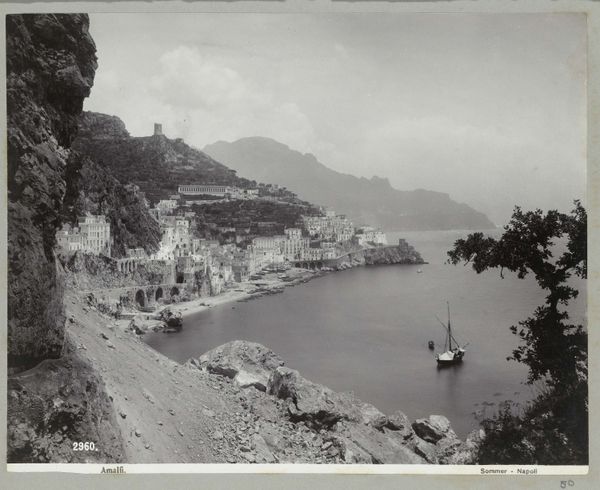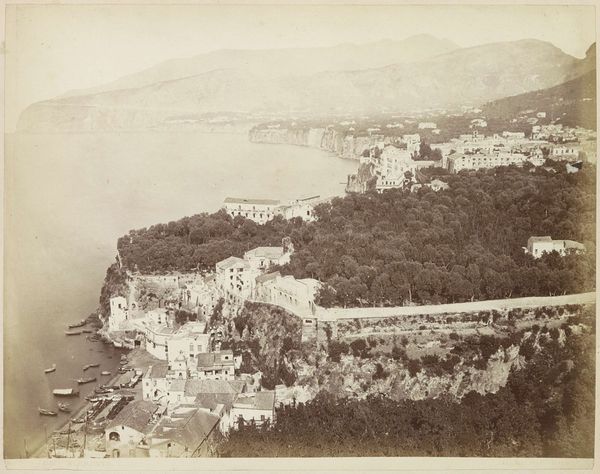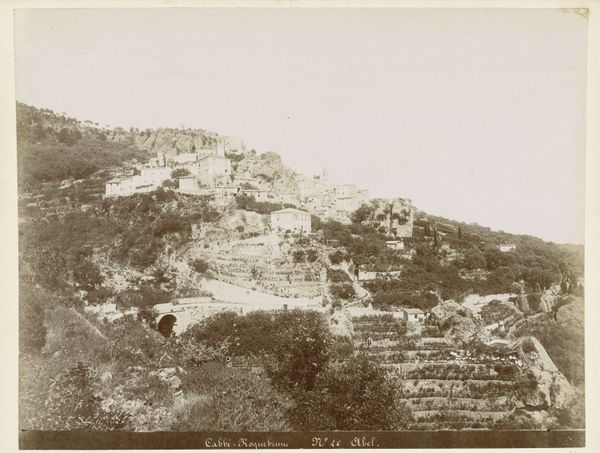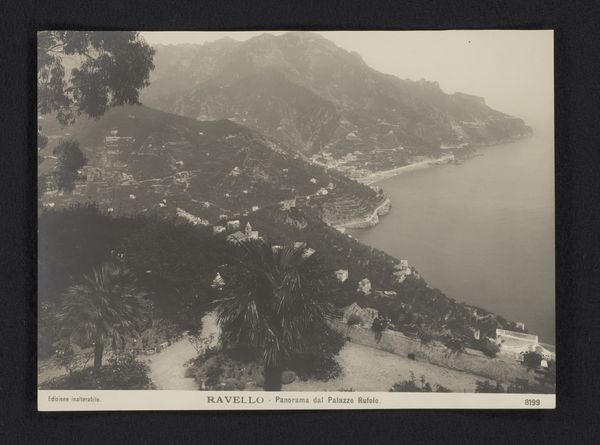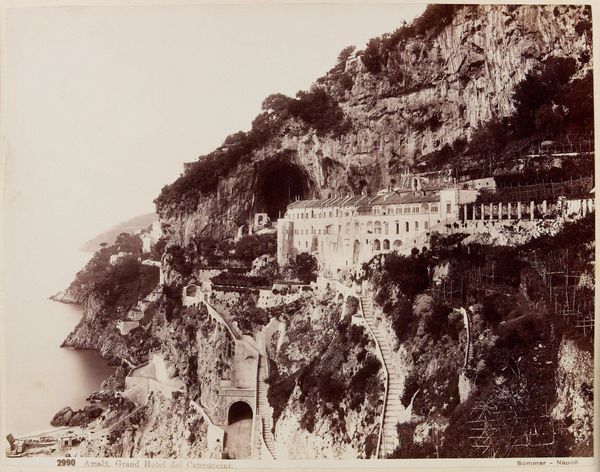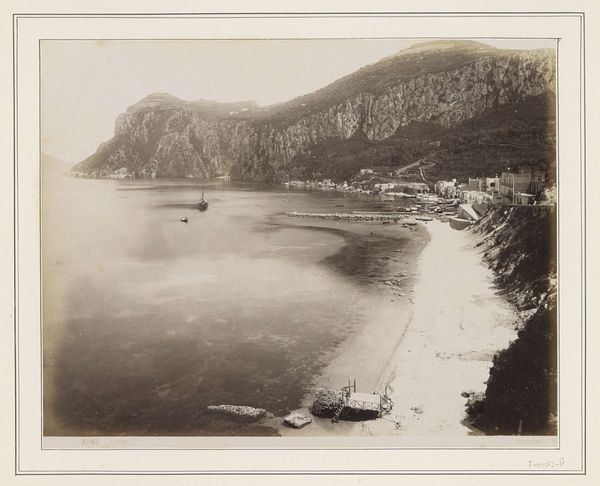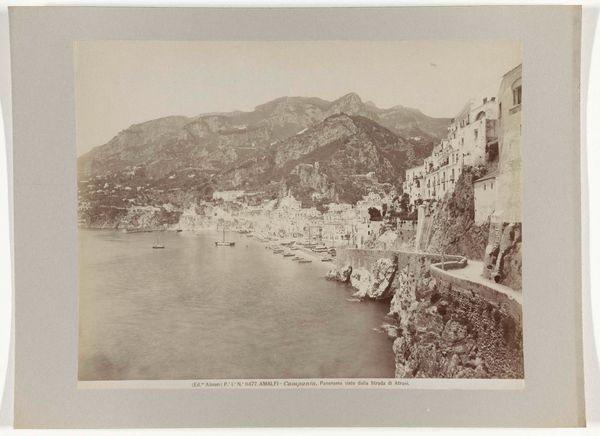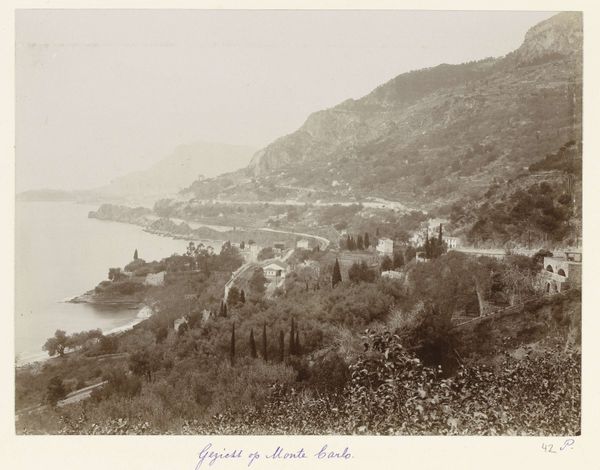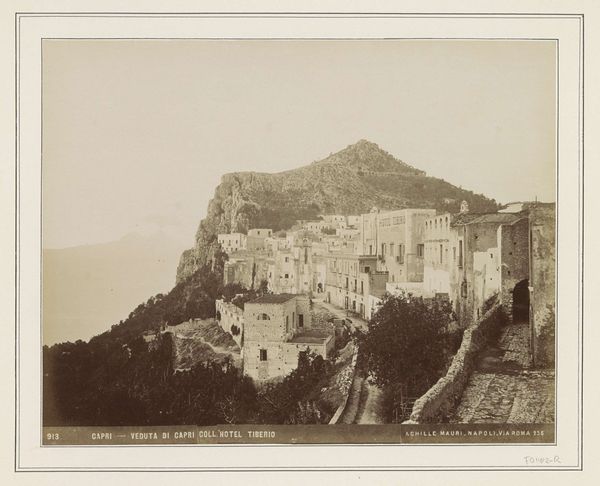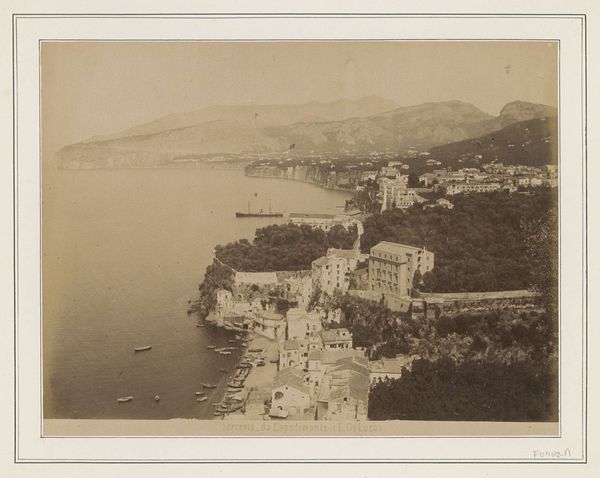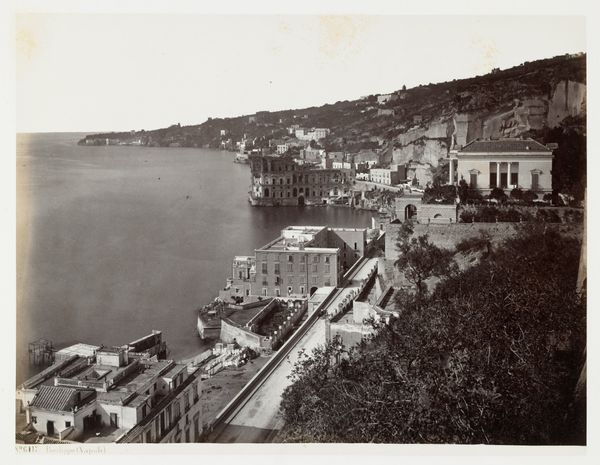
photography, albumen-print
#
pictorialism
#
landscape
#
photography
#
cityscape
#
albumen-print
Dimensions: height 200 mm, width 252 mm, height 309 mm, width 507 mm
Copyright: Rijks Museum: Open Domain
Giorgio Sommer created this albumen print of Positano, Italy, sometime in the late 19th century. Sommer was a German photographer who established a successful studio in Naples, catering to the burgeoning tourist trade. This image offers a window into the visual culture of the time. The rise of photography coincided with the expansion of tourism, creating a demand for picturesque views that could be easily reproduced and distributed as souvenirs. Sommer's work capitalized on this market, presenting an idealized vision of Italian life and landscape. We can also consider the institutional context in which this photograph was produced and consumed. The establishment of museums and galleries, coupled with the growth of photographic societies, helped to legitimize photography as an art form. Sommer's prints found their way into these institutions, contributing to the construction of a national identity and the promotion of Italy as a destination for cultural tourism. To fully understand this photograph, we might consult travel guides, exhibition catalogs, and other primary sources from the period. These materials can shed light on the social, economic, and political forces that shaped both the production and reception of Sommer's work.
Comments
No comments
Be the first to comment and join the conversation on the ultimate creative platform.
